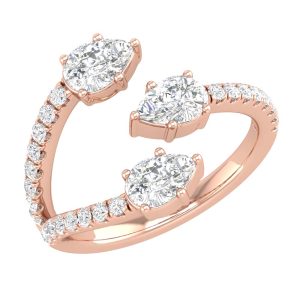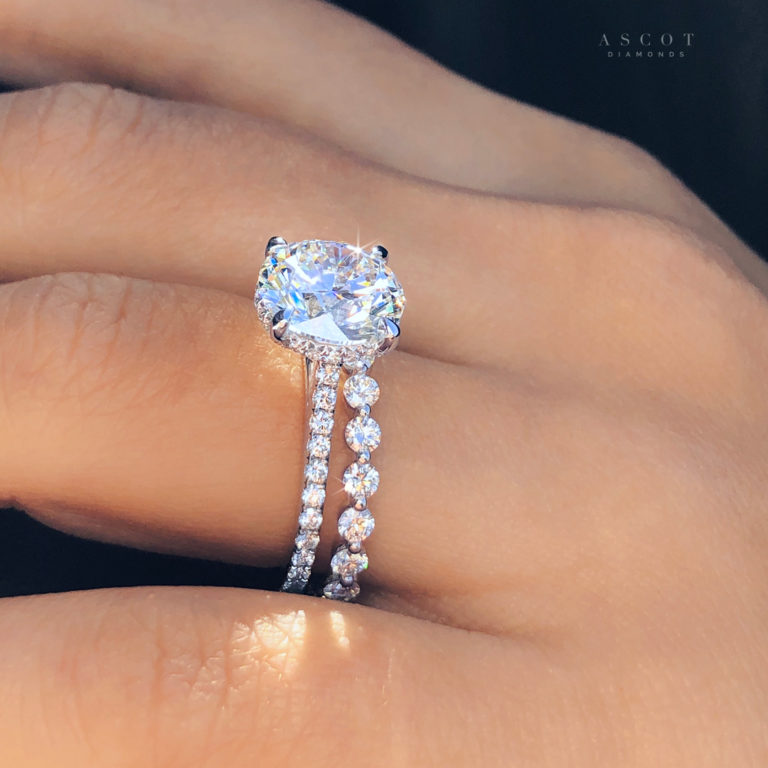The Benefits of Investing in a Lab-Grown Diamond Ring
Contents
ToggleHistory of Lab-Grown Diamonds
The history of lab-grown diamonds is relatively short, as the first successful diamond was only created in 1954. Since then, however, they have become increasingly popular with consumers looking for an ethical alternative to mined diamonds. Lab-grown diamonds are now widely available through both online and brick-and-mortar jewellery retailers.
Lab-grown diamonds were first developed by Dr Harry Steenbock at the University of Wisconsin in 1954. He used high pressure and temperature to create a synthetic version of the diamond from carbon atoms that had been extracted from graphite rods. Steenbock’s method was not commercially viable and it wasn’t until 1970 that General Electric scientists perfected the technique for creating gem-quality stones with a similar appearance to natural diamonds.
Today there are two main methods used to create lab-grown diamonds: HPHT (High-Pressure High Temperature) and CVD (Chemical Vapor Deposition). The HPHT method involves applying intense heat and pressure to carbon seeds which cause them to transform into diamond crystals; while CVD uses a plasma field created by microwaves or lasers in order to break down gas molecules into individual carbon atoms which form a crystalline structure that resembles natural diamond when cooled down.

Cost Comparison of Lab Grown vs Natural Diamonds
When it comes to purchasing diamonds, the debate between lab grown diamond rings in Melbourne and natural diamonds has been a controversial one. While both offer similar benefits and features, there is no denying that cost plays a major role in your final decision.
Lab-grown diamonds are created in a laboratory setting with sophisticated equipment, while natural diamonds are found in nature. Lab-grown diamonds have become increasingly popular due to their lower price tag compared to natural stones. Generally speaking, lab-grown stones can cost anywhere from 20 – 40% less than a comparable natural diamond of the same quality grade.
The prices of both types of diamond vary greatly depending on size, shape and quality grade – meaning you could find an expensive lab-grown diamond or an affordable natural one with similar characteristics. In addition to cost savings when choosing lab-grown over naturally mined ones, customers also receive additional assurance as each stone is verified as conflict-free by third-party laboratories such as GIA or AGS.
It is important to note that not all labs produce equal quality gems which should be taken into account when comparing costs between the two types of stones – some labs use higher quality equipment than others which results in superior cut and clarity for their stones.

Care and Maintenance for Lab Grown Diamond Rings
Lab-grown diamonds are becoming increasingly popular for those looking for an alternative to mined diamonds. While lab-grown diamonds may look and feel just like real diamonds, there are some differences in the way we care for them. With proper maintenance, your lab grown diamond ring can last you a lifetime.
The first step in caring for your lab-grown diamond ring is to keep it clean and free of dirt or debris. For regular cleaning, use a mild detergent with warm water and a soft toothbrush or cloth to gently scrub away any dirt or grime that has built up on the stone. Always make sure you rinse away all soap residue before drying the ring with a soft towel or cloth. Avoid using any harsh chemicals when cleaning as they could damage the surface of your stone or its setting.
To protect your lab-grown diamond further, be sure not to wear it while doing activities such as swimming, bathing, gardening etc., as these can expose your stone to harsh chemicals which could cause discolouration over time. You should also avoid wearing the ring while working out at the gym as this could cause sweat and oils from your skin to build up on the metal setting which could lead to oxidation over time if not properly cleaned off afterwards.
Conclusion
Lab-grown diamond rings are becoming increasingly popular due to their ethical and eco-friendly nature, as well as the fact that they cost up to 40% less than mined diamonds. Lab-grown diamonds are also just as beautiful and durable making them a great alternative to traditionally mined diamonds. With cost savings and sustainability benefits, lab-grown diamond rings provide a great option for someone looking for a beautiful, meaningful piece of jewellery.
Recommended For You
Cycling Training Plan for Beginners – Enjoy Cycle Ride
Most Inside
Most Inside offers high-quality recommendations and valuable updates to enhance all aspects of your life, providing premium guidance and enriching experiences.




